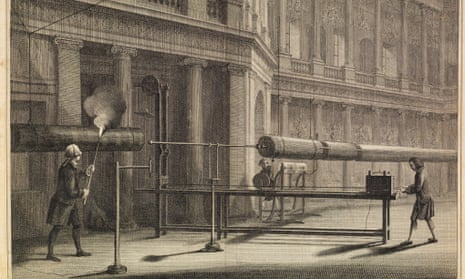Researchers are estimated to waste 15 million person-hours a year on unpublished submissions to scientific journals. How can we make scientific communication more efficient?
This was one of the questions raised at a recent debate at a conference celebrating the 350th anniversary of the Philosophical Transactions, the world’s oldest scientific journal, published by the Royal Society. I am in the team of historians from the University of St Andrews who ran the conference, and writing a history of the journal and its editorial practices. We want to bring this history right up to the present day, and so invited four experts in scientific publishing to discuss the present and future of the learned journal. Chaired by Aileen Fyfe, from St Andrews, the roundtable debate ranged from author education to peer review and sustainable business models.
Better training for authors might be one way to save some of those 15 million hours. “The secret of successful publishing is getting authors to send their best papers for you,” argued Cameron Neylon, Advocacy Director at Public Library of Science. He pointed to the growing number of websites that provide guidance for scientists who want to submit a successful journal article, which can be particularly useful for those new to the field or who come from different cultural contexts.
But why assume those 15 million hours are all wasted? Eva Baranyiová, Vice-Director of the European Association for Science Editors, emphasised the role the peer-review process plays in educating authors about how to write good articles. She said that good reviews were a form of mentoring, which should help authors not only with that article but with future articles too. Diana Worrall, editor of the Monthly Notices of the Royal Astronomical Society, reiterated the importance of reviewers as mentors. It is one of the things her Learned Society is particularly proud of.
“We talk about peer review as if it’s this unitary thing,” claimed Neylon, drawing attention to the procedure’s limitations. “Peer-review is radically different from domain to domain, from discipline to discipline.” And, often enough, from journal to journal. Even journals in the same research area have different priorities, such as novelty and methodological rigor. This raises the question as to whether peer-review can prepare the author for successful scientific publishing in general—or merely trains them for a particular journal.
Stuart Taylor, the Publishing Director at the Royal Society, raised a more fundamental question about what we expect scientific authors to do. “Authors still create journals in prose-style — do we really need to produce all that text?” Taylor wondered if the traditional formats were still appropriate for presenting scientific results in the internet age. Taylor’s suggestion that the standard structure of a scientific article might be out-of-date met with some approval — and some scepticism. Could researchers sustain a coherent argument without prose?
“It’s not really clear yet what the best format for the article of the future might be,” Taylor continued. Taylor was supported by Neylon: “we still have reading and interacting experiences with journal articles that are circa web 2000—and this is true for all the major publishers.” Although Neylon expressed optimism that such digital anachronism would improve within the next five years, he was less positive about the current and future business models for scientific journals.
We have focused too much on a binary division between commercial and Learned Society publishers, Neylon argued. He referred to the caricatured perception of the later as selfless supporters of science and the earlier as greedy opportunists in the academic world.
It’s not so simple. “I think the important questions are: who is paying? What value is generated and how is any surplus re-invested? These questions need to be answered first,” Neylon said. He suggested that we need to be clearer about what science journals are supposed to accomplish before we can work out the most appropriate business model.
Journals are ranked by their impact factor, which reduces a journal policy and principles to a single number. The lack of appreciation of the rich variety of practice among scientific journals might, suggested Baranyiová, be yet another undesirable side-effect of this simplistic evaluation. The panellists agreed that editors, as well as authors, felt the “terror of the impact factor”. Unsurprisingly, some even wished it were possible to un-invent this quality measure.
Cameron Neylon went a step further and argued forcefully for a radical reinvention of scholarly communication. “Scientific communication is a means of dissemination, it is not a product,” he stressed. Taylor added, “We are limiting ourselves in the present model by thinking of science journals as products purchased by a consumer.” The panellists agreed that the goal should be to move away from scientific publishing — towards scientific communication.
---
Anna Gielas is a first year PhD student at the University of St Andrews. She researches the history of scholarly publishing.
The last two sentences of the penultimate paragraph of this blogpost were amended on April 14th to reflect the conversation more accurately.

Comments (…)
Sign in or create your Guardian account to join the discussion